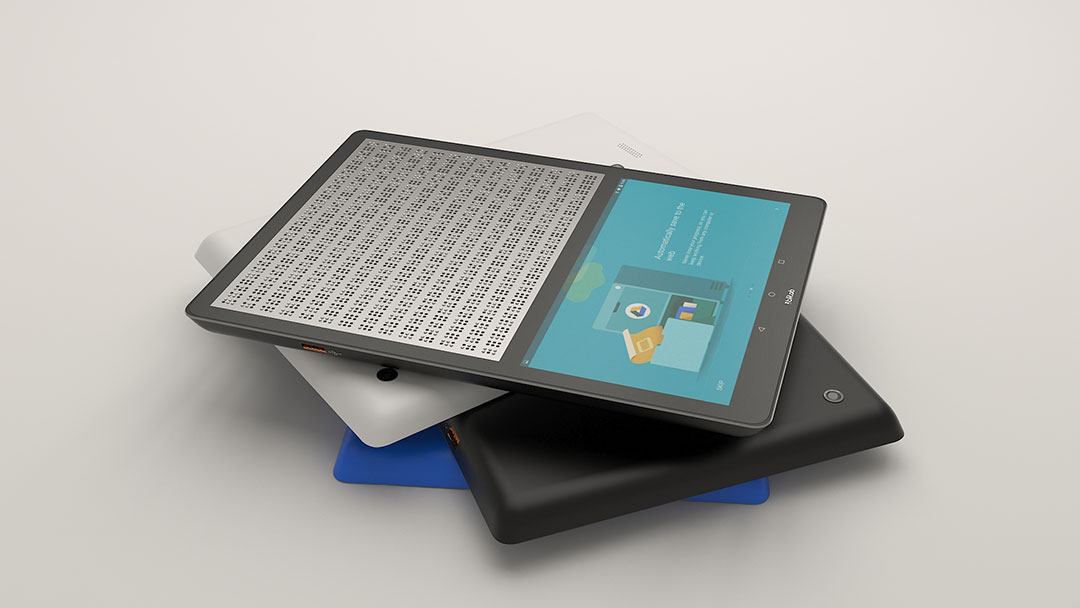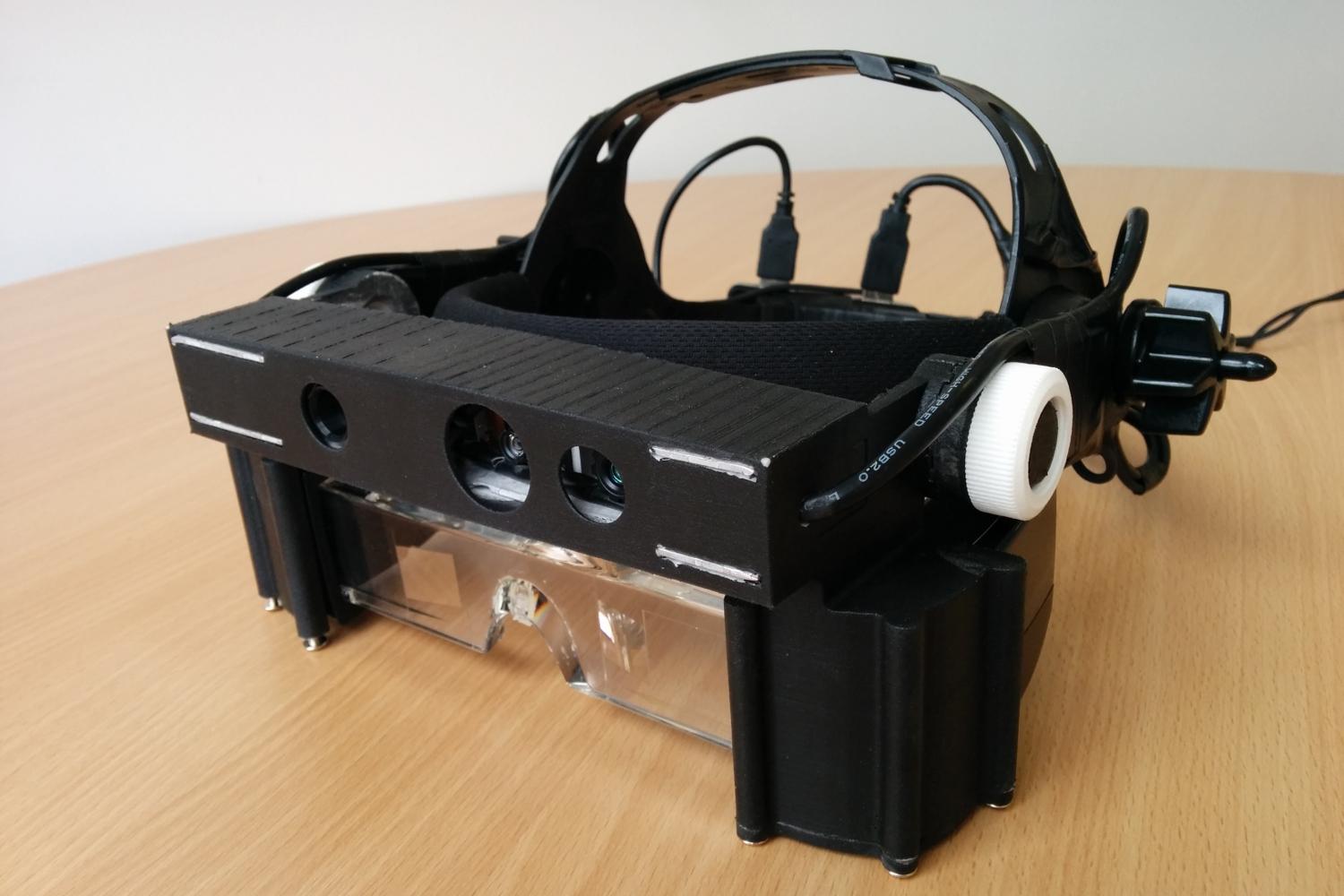Discover Ingenious Devices Made for the Visually Impaired
The growth of innovative tools for the visually damaged represents a significant development in accessibility and self-reliance. Technologies such as clever glasses with AI capacities and mobile applications developed to offer auditory summaries are improving daily experiences for individuals. Furthermore, wearable gadgets that employ haptic feedback improve ecological understanding, while modern-day Braille advancements offer new methods to engage with message. As these devices proceed to develop, their influence on the lives of those with visual disabilities raises crucial concerns regarding the future of inclusivity and freedom in numerous facets of life. What exists in advance in this technical landscape?
Smart Glasses for Navigation

Smart glasses designed for navigating are revolutionizing the method aesthetically impaired individuals interact with their setting. These advanced gadgets make use of a combination of camera modern technology, synthetic intelligence, and acoustic comments to supply real-time information regarding environments. By using challenge discovery systems, clever glasses can signal individuals to prospective hazards, enabling safer wheelchair in both acquainted and strange setups.
The integration of GPS innovation additionally enhances navigating abilities, enabling individuals to get auditory directions as they relocate. This hands-free approach not just cultivates freedom however likewise empowers aesthetically damaged individuals to browse city landscapes with boosted self-confidence. Furthermore, numerous clever glasses are outfitted with attributes that recognize landmarks and street indications, giving contextual information that improves the customer experience.
Furthermore, the advancement of these devices is continuously progressing, with firms functioning to improve the accuracy of things acknowledgment and increase the series of navigational attributes. As clever glasses come to be a lot more easily accessible and cost effective, they hold the prospective to dramatically change day-to-day live for visually damaged individuals. Eventually, these innovative devices stand for an important action towards inclusivity, offering boosted mobility and a greater sense of autonomy for people navigating the globe around them.

Mobile Apps for Daily Living
Just how can mobile applications boost the day-to-days live of visually impaired people? Mobile apps are reinventing the method visually impaired users browse their settings, take care of everyday tasks, and access information. These applications supply crucial assistance via various performances, fostering self-reliance and improving high quality of life.
A number of innovative mobile apps are made specifically for everyday living. Applications like Be My Eyes attach aesthetically damaged customers with sighted volunteers using video clip phone calls, allowing them to obtain real-time assistance with jobs such as reviewing tags or navigating unfamiliar spaces. Seeing AI, created by Microsoft, utilizes artificial knowledge to explain surroundings, reviewed message, and recognize objects, efficiently changing a smartphone right into a powerful tool for daily aid.
In addition, navigating applications customized for the aesthetically impaired, such as Aira and BlindSquare, supply audio-based directions and environmental details, allowing users to traverse their surroundings securely and confidently. Past navigation and immediate support, mobile applications likewise sustain company and job administration, with functions that aid users establish tips, produce order of business, and track visits. In summary, mobile applications act as essential sources, empowering aesthetically damaged individuals to lead more independent and fulfilling lives.
Wearable Technologies for Support
Empowerment with technology is increasingly noticeable in the realm of wearable gadgets designed to help aesthetically impaired individuals. These cutting-edge tools integrate seamlessly right into every day life, boosting navigation and supplying crucial comments to individuals. For instance, wise glasses equipped with cams can review and acknowledge faces message aloud, permitting customers to communicate even more with confidence in social and click to find out more expert settings.
One more remarkable development is making use of haptic responses systems in wearable tools. These systems make use of resonances or other tactile signals to share info concerning the individual's setting, such as obstacles or adjustments in surface, improving mobility and safety. Wearable modern technologies likewise include wristbands that attach to smart devices, informing customers to notifications via subtle vibrations, hence enhancing connection without dependence on visual signs.
As these innovations remain to progress, they are not just enhancing self-reliance for aesthetically damaged people but also cultivating a optical clinic near me greater feeling of incorporation in society. By connecting the space in between difficulties faced in day-to-day living and the possibility for freedom, wearable innovations function as essential devices in the mission for equality and empowerment for those with visual disabilities.
Sound Summary Tools
Sound description tools play a critical role in improving availability for visually impaired people, supplying them with the capability to involve with aesthetic media. Speech-to-text devices for low vision. These devices use narrated summaries of vital aesthetic elements in movies, tv shows, and live efficiencies, making certain that customers can totally comprehend the context and feelings communicated via visuals
Audio description can be incorporated right into different systems, including streaming solutions, cinema screenings, and live theater. Many prominent streaming solutions currently consist of audio summary as an ease of access attribute, enabling customers to pick it conveniently. In enhancement to conventional media, specialized apps additionally exist, giving audio descriptions for art exhibits, galleries, and other cultural events.
The performance of audio description pivots on the skill of the storytellers, who have to communicate aesthetic details succinctly without diminishing the original sound. Technologies in this field are additionally leading the way for even more personalized experiences, where customers can change the level of information and pacing according to their choices.
Braille Innovations and Devices
Braille tools and technologies have substantially transformed the method Read More Here aesthetically impaired individuals connect with text and info. Modern developments have actually led to the advancement of functional devices that improve proficiency and freedom among customers. Significantly, Braille display technologies have actually developed, enabling dynamic reading experiences. These gadgets convert electronic message right into Braille, allowing individuals to access a large selection of details on smartphones, tablet computers, and computers.
In addition, mobile Braille notetakers incorporate standard Braille input with modern-day capabilities, facilitating note-taking, scheduling, and document editing and enhancing on the move. Screen readers for the blind. These small gadgets usually feature text-to-speech abilities, connecting the space in between Braille and acoustic info
Additionally, cutting-edge Braille printers have arised, enabling customers to generate Braille labels, records, and academic materials successfully. This accessibility cultivates greater engagement in specialist and educational atmospheres, inevitably promoting inclusivity.
Moreover, study into wise Braille modern technologies continues to expand. Devices that incorporate expert system are being checked out to offer real-time navigation assistance and contextual details, improving the customer experience in diverse settings. Overall, these innovations mirror a dedication to equipping aesthetically damaged individuals with innovation, guaranteeing they can conveniently access and engage with the world around them.

Verdict
The advancement of ingenious devices for the visually impaired considerably improves freedom and quality of life. Smart glasses, mobile applications, wearable innovations, audio summary tools, and Braille innovations jointly encourage people by giving essential navigating help, ecological recognition, and enhanced analysis experiences. These modern technologies not only foster better incorporation but also advertise autonomy in day-to-day tasks, eventually contributing to an extra fair and available society for visually impaired people. Proceeded development in this area holds pledge for additional improvements.
As smart glasses end up being extra inexpensive and easily accessible, they hold the prospective to substantially change day-to-day life for aesthetically impaired users. Mobile applications are changing the means aesthetically impaired users navigate their environments, handle day-to-day tasks, and gain access to info. Applications like Be My Eyes attach visually damaged customers with sighted volunteers via video clip phone calls, allowing them to receive real-time aid with jobs such as checking out labels or browsing strange areas.In addition, navigating applications tailored for the aesthetically impaired, such as Aira and BlindSquare, offer audio-based directions and environmental info, making it possible for individuals to traverse their environments securely and with confidence.The improvement of innovative devices for the aesthetically impaired significantly improves self-reliance and quality of life.